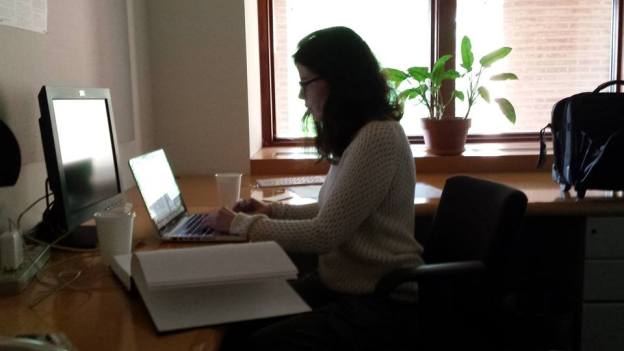©2017 Do not copy, publish or reproduce without the written permission of Louise Dubin
Because of this blog, I receive some interesting email queries. One that has come up a few times is the cross-influence of Chopin and Franchomme—to what extent, and in what direction?
For almost 2 centuries, many (including Schumann) have assumed that Chopin was the guiding force. But in my Introduction to the freshly published Selected Works for Cello & Piano by Auguste Franchomme (May 2017, Dover Publications: click here for Table of Contents), I discuss some examples of how Franchomme may have influenced Chopin (and vice versa). I’ve posted some excerpts below. After an email discussion this week with my friend, the great pianist and pedagogue Sara Davis Buechner, I invited her to share her own observations on the same topic, from a pianist’s perspective. Stay tuned for her fascinating post!

From my Introduction© to the Dover volume:
“After Chopin’s death, Franchomme sorted through the hundreds of pages of manuscripts that Chopin left to him and prepared several posthumous works for publication, including the Mazurka, Op. 68, No. 4. He contributed to the complete Chopin editions prepared by Chopin’s pupils Tellefsen (1860) and Mikuli (1880), and helped edit the Breitkopf & Härtel Chopin edition (1878–1880). All of this exposure to Chopin’s music must have inspired Franchomme’s 50-odd arrangements of his solo piano works for various cello combinations (many unpublished), including the Nocturnes, Op. 55, and the 1870 arrangements included in this volume. Chopin was also the direct inspiration for some of Franchomme’s original compositions, including his gorgeous Trois Nocturnes, Op. 15 (1839, included here) …The nocturnes of both Chopin and Franchomme feature aria-like melodies over broken chords, and usually have a ternary structure. Franchomme was the first composer of nocturnes for cello in this form…”
“Franchomme also influenced the works that Chopin composed for the cello, both directly and perhaps indirectly. We know that Franchomme performed Chopin’s cello works with him, and suggested changes to his Introduction and Polonaise Brillante, Op. 3 that Chopin incorporated into subsequent published editions. Chopin played his Op. 65 with Franchomme privately before completing it, and likely incorporated Franchomme’s suggestions into the final publication. In addition, Franchomme’s decade of performances in the Théâtre-Italien certainly inspired his own music, and may also have contributed to Chopin’s fascination with the Italian aria, and his incorporation of this vocal style into his solo piano writing…”
Cross-influence between Chopin and Franchomme in fingerings, phrasing, and style- this is where it gets technical, y’all!
“…Franchomme’s years of playing with singers clearly informed some of his fingerings.” For example, he “…relished slides under a slur on one string…which are rather out of style today and which even Duport had advised against except as a last resort, to avoid a ‘disagreeable sound.’”
Despite Duport’s warning, Franchomme apparently executed these slides with great taste. In the words of Henri Blanchard, “suave et pur, élégant et mélodique” (Revue et gazette musicale de Paris, April 25, 1841). Incidentally, similar vocal qualities in Chopin’s music were noticed by Charles Rosen! He wrote in The Romantic Generation that Chopin “composed with a sense of melody and a way of sustaining the melodic line derived directly from Italian Opera.”
In the Dover publication I also discuss “an even more remarkable fingering choice: Franchomme’s use of the same playing finger on several successive descending notes in a row. The most extreme example I have found occurs in his Fantasie sur Souvenirs de ‘Richard Coeur de Lion’ de Grétry, Op. 27, where he uses the third finger on a chromatic descent of 13 notes, probably a world record for a cello composition up to that point! Shorter examples of this unique fingering are found throughout Franchomme’s compositions (in this volume, see the three 4th fingers in the opening of his arrangement of Chopin’s Prelude, Op. 28, No. 20, four consecutive notes played with the 4th finger at the end of the introduction of his Op. 23, and the five consecutive descending third fingers in the opening Largo of his Op. 34). In Chopin’s own fingerings printed in his original publications, he often indicated using the same finger on consecutive notes in a melodic passage, for a supple cantabile led by the arm. Watching Chopin’s technique may have inspired these fingerings in Franchomme’s compositions. Or, perhaps Franchomme’s decade at the Théâtre-Italien contributed to Chopin’s own fascination with Italian arias and his incorporation of vocal techniques into his piano fingerings! (Interestingly, a comparison of Chopin’s fingerings to those indicated by Franchomme in his Chopin transcriptions reveals only that they both used this type of repeated fingering, but not in the same places.)”
“Franchomme’s works are full of… long slurs over many notes…[for example, his] transcription of Chopin’s ‘Cello’ Etude in C Sharp minor, Op. 25, No. 7, (p. 178) is as faithful as possible to Chopin’s long phrase markings, within the parameters of what is possible on the cello….In combination with Franchomme’s tendency to use thumb and harmonic fingerings in melodic lines, these clues suggest a tendency toward faster tempos, and a style of performance favoring elegance over massive sound production,” which seems also to have described Chopin’s playing.
©2017 Louise Dubin


I had no idea that Franchomme had any influence at all on Chopin! Great stuff!
LikeLike
Thank you!
LikeLike